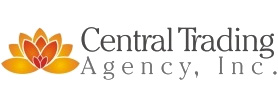All industry executives know that they must optimize their Procurement operations in order to reduce internal costs, increase profits and safeguard their production from external risks. What is the way forward for Procurement optimization in Aerospace? In this article we explain the challenges and outline some best practices.
In a world that is changing every day due to global economic volatility, and at a time of increasing global market competition, an efficient Procurement process is becoming more important and more difficult to achieve for companies in the Aerospace industry. The complexity of most global supply chains and the trend of outsourcing overseas are exposing supply chains and Procurement operations to more and more risks every day. The increasing competition is also forcing companies to either improve operations or face diminishing market share.
On the one hand, many Aerospace companies are optimistic about growth as demands for new aircraft are increasing due to consistent global growth in air travel (both civilian and military), strong growth in emerging markets and growing demand for fuel-efficient aircraft.
On the other hand, many manufacturers are cautious as a result of unpredictable jet fuel prices and the difficulty in getting financing and tight environmental regulations.
All industry executives however know that they must optimize their Procurement operations in order to reduce internal costs, increase profits and safeguard their production from external risks. What is the way forward for Procurement optimization in Aerospace? It is crucial to first identify Procurement challenges in the industry, and then employ best practices.
Aerospace Procurement Challenges
Against the backdrop of heightened competition and risk, managing Procurement in Aerospace is becoming more and more challenging for all companies. The main challenges facing decision makers are the following:
1. Supply Chain as Source of Corporate Risk
The supply chain is an important area of spend and untapped savings, representing up to 80% of a company’s controllable costs and often having a savings potential of about 20%. It is also often a prime source of risk that requires careful administration.
2. Lack of Risk Management Processes
Unfortunately, as the strategic consequences of supply chain and Procurement decisions are not always immediately apparent, they are often not subject to strict risk management processes.
For instance, when Boeing launched its new 787 Dreamliner in June 2013, a faulty battery caused a fire on board an aircraft and forced the temporary closure of Heathrow Airport. Some believe that the complexity of the supply chain makes errors of this kind inevitable. These mistakes can however be avoided, or at least minimized, by careful administration.
3. Over-Emphasis on Cost Reduction
In spite of modern best practices, the Procurement function is rarely regarded as strategic and is usually managed for cost. Over-emphasis on cost reduction can result in the deterioration of response times, logistical expediency and quality. If only cost drives the Procurement process, no amount of future initiatives towards performance improvement will be able to fix the mistakes and the business will always be at a loss. Things can go sour quickly in Procurement, which can result in potentially unrepairable reputational damage. There is however a way to both achieve cost reduction and maintain efficiency and quality - this can be done by outsourcing the Procurement process to a trusted partner.
4. Late Deliveries Affecting the Whole Production Process
Late deliveries of components can result in downtime, causing delays in aircraft deliveries. These can make clients cancel orders, resulting in drops in revenue.
Glitches in deliveries and other operational mishaps can cause huge expenses, reduced profitability and impaired cash flow, not to mention the implications on brand, reputation and share price. The example of Airbus Group from April 2016 is telling – the company’s shares dropped 6% a. After it reported a 50% drop in net income in the first quarter, hurt by delays to aircraft deliveries and cancelled orders, possibly caused by late deliveries of components.
In today’s competitive landscape, Aerospace companies can’t afford to have their profitability affected by Procurement glitches of this kind.
Best Practices in Aerospace Procurement
1. Build Trust and Relationships
Building a supplier community and developing trust are crucial factors in ensuring that the Procurement process operates smoothly.
All collaborators and suppliers need to be selected carefully, and relationships cultivated with care, to reduce risk and ensure an optimal Procurement process and cost profile.
2. Timely Deliveries
Timely deliveries are the basic requirement for any good Procurement process. Teaming up with trustworthy suppliers and partners who can guarantee that companies will receive the necessary parts or supplies on time will ensure a stable and undisturbed production process, helping the entire business.
3. High Frequency of Shipments
Receiving products when and where they are needed will enable buyer companies to keep inventory levels and safety stocks at a minimum and in this way achieve operating cost reductions.
4. Quick Lead Times
Quick lead times can help companies operating in changing markets to get the right product to market at the right time. Maintaining an agile Procurement process can help businesses take advantage of growth spurts which may be seasonal while reducing the overhead costs associated with such seasonal fluctuations. The ability to quickly execute an increase in production is an increasingly important differentiator in today’s competitive market.
5. Cost Optimization
Even though cost reduction should not be the focus of Procurement, it is naturally advisable for companies to optimize costs in ways that don’t negatively affect the business. Strategic alliances are crucial here – obtaining a reduction in the cost of goods through volume purchasing or the reduction of overhead costs by outsourcing the Procurement process can significantly affect the bottom line.
READ MORE: Procurement Outsourcing is a Great Business Decision
6. Multi-Disciplinary Team
New risks require a new solution, backed by a multi-disciplinary team. An effective Procurement process should employ experts in the fields of Distribution and Supply Chain Logistics, Manufacturing and Product Development in order to make informed decisions aligned with business goals and ensure that the Procurement process runs smoothly.
What Is the Way Forward?
Aerospace companies looking to optimize their Procurement process can either look to implement these best practices internally, or outsource procurement with a trusted partner. As internal optimization can be very expensive and complex and requires time that most companies don’t have, Procurement outsourcing has become an essential strategy for companies to remain competitive in the Aerospace industry.
CTA’s Procurement service offers a highly skilled and dedicated team to perform Procurement functions quickly and inexpensively, and with the flexibility needed to meet the changing needs of any Procurement department.
Find out how CTA can help you optimize your Procurement process by contacting us or by submitting your RFQ.

